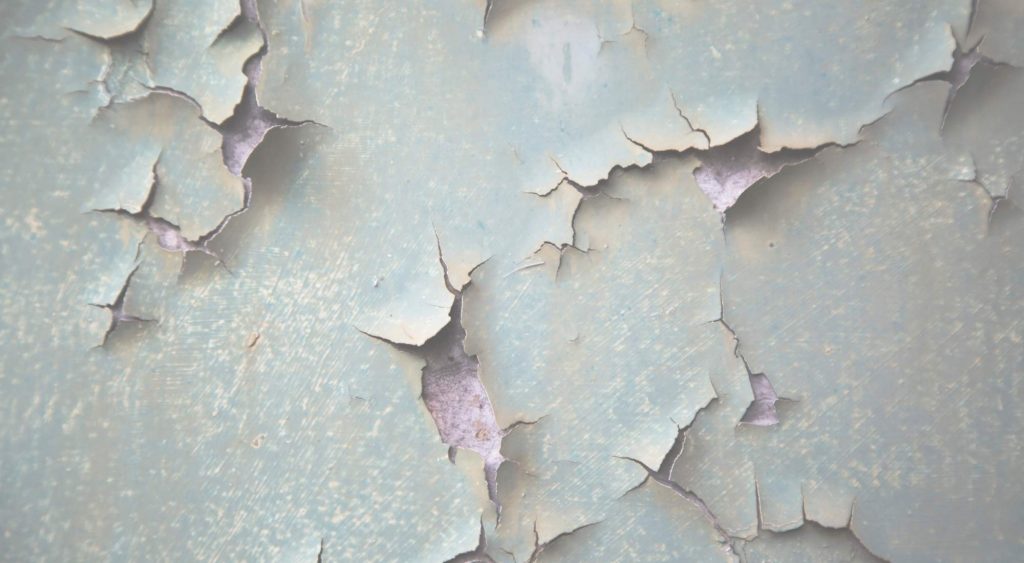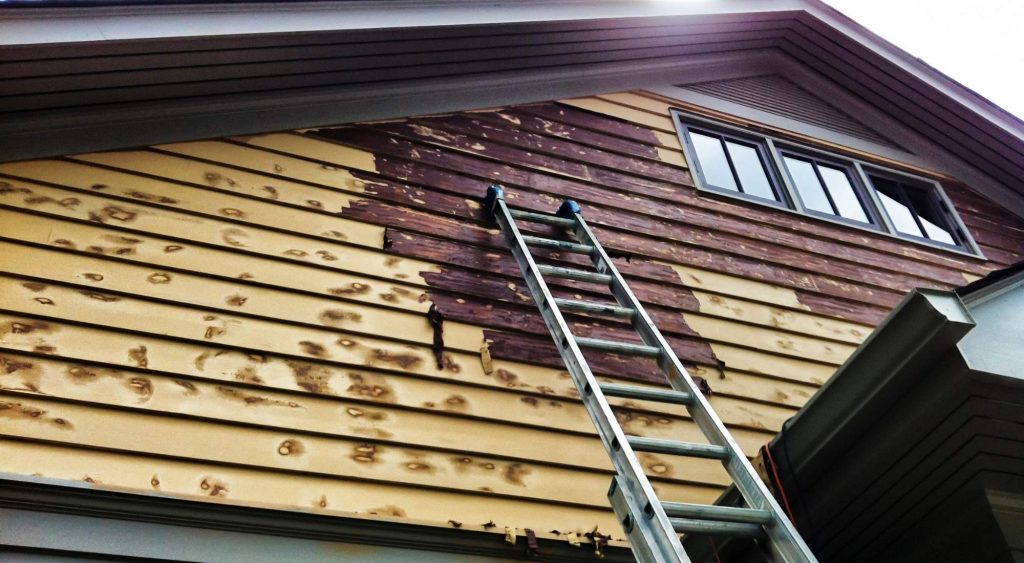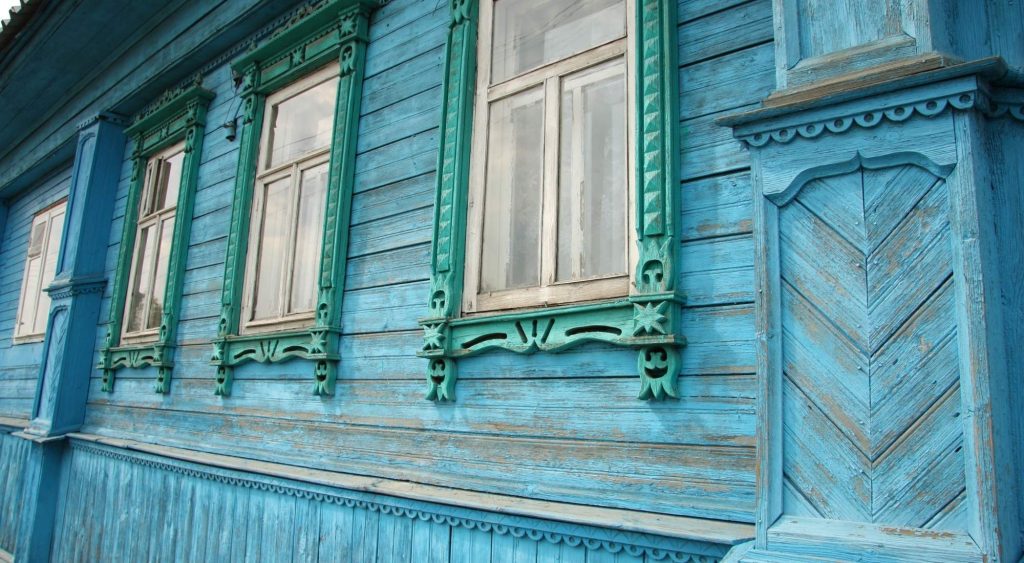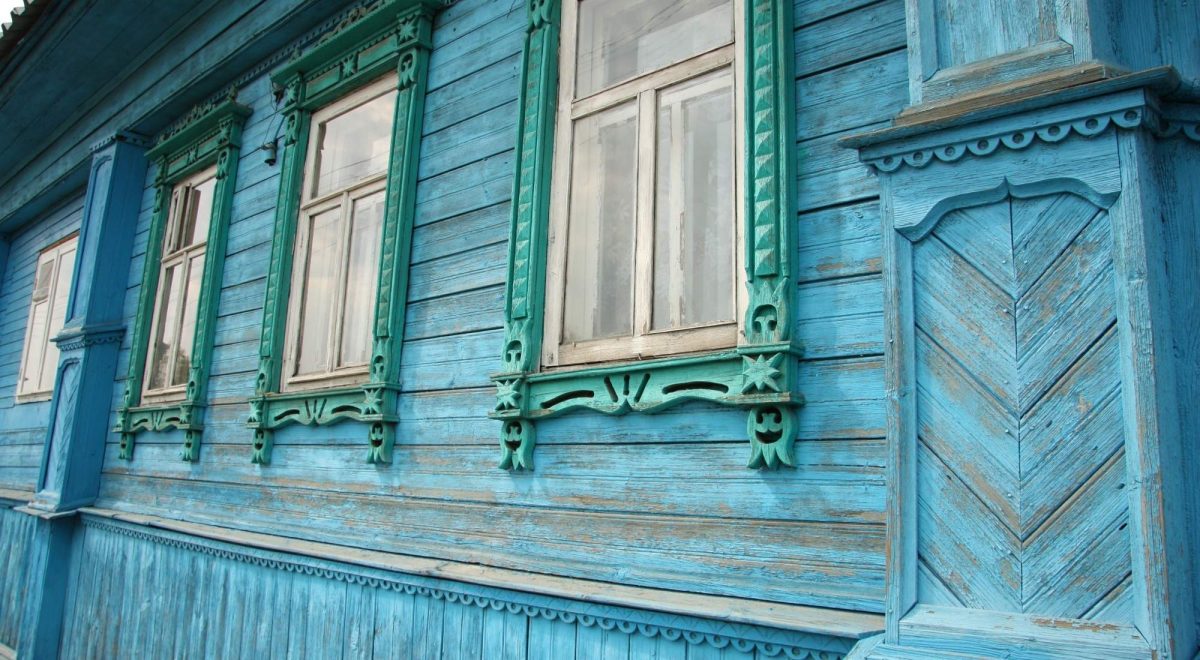Tackling the challenge of repainting the exterior of your home is no small task.
There’s a lot to mess up, and the price of fixing those mess-ups can be a high-dollar investment.
You want to do the job right, but your existing paint has obvious problems, and you’re looking for solutions.
If the paint on the outside of your home needs some work, but you’re unsure of where to start.
We can help. This guide covers some of the most common exterior paint problems and solutions.

Table of Contents
- Why Does the Exterior of a House Face So Many Potential Paint Problems?
- 9 Potential Exterior Paint Problems and Solutions
- Fix and Avoid Future Exterior Paint Problems by Hiring the Professional Painters at A1 Paint Removal, Painting, and Restoration
Why Does the Exterior of a House Face So Many Potential Paint Problems?
Here’s the deal.
The exterior of your home goes through a lot:
- Heat
- Cold
- Aging
- Rain
- Hail; and
- Mold
And these environmental and weather issues take their toll on your home’s exterior paint.
9 Exterior Paint Problems and Solutions
There are a TON of issues that homeowners can face when it comes to the paint on the exterior of their homes.
You’ll be glad to hear that the pros at A1 Paint Removal, Painting & Restoration have years of experience with every imaginable interior and exterior paint problem — and they are experts at finding the right solution.
Let’s take a look at some of the most common exterior paint problems and solutions.

Problem #1: Blistering Paint
If the exterior paint on your home has small to medium-sized bubbles underneath the paint film, you have blistering paint.
This exterior paint problem is commonly seen on wood trim and siding and may be caused by:
- Paint that was applied to damp wood, causing moisture to be trapped and to expand the paint film.
- Paint that was applied to a hot surface in direct sunlight and dried too quickly.
- Rain, dew, or very high humidity that penetrated the latex paint after it dried — particularly common on latex paint of lower quality or surfaces that weren’t properly prepared.
- House moisture has escaped through the walls as a result of improper house ventilation.
Solution
To remedy blistering paint:
- Make any necessary repairs to the home’s interior ventilation.
- Repair all loose or missing caulking around doors and windows.
- Scrape away the blistering paint.
- Sand the surface down to bare wood.
- Make sure the wood is completely dry before painting.
- Do all sanding, priming, and painting out of direct sunlight and in non-humid conditions.
- Use only high-quality latex paint.

Problem #2: Flaking/Peeling Paint
Peeling and flaking paint are common problems and may be caused by:
- Interior moisture
- Exterior moisture; or
- Poor paint adhesion
If peeling is due to poor adhesion, the paint will be flaking or peeling and separating from an earlier paint layer or from the substrate, leaving some paint behind.
Sometimes you’ll be able to see portions of previous layers of paint underneath the curling, peeling paint layer. Peeling due to poor adhesion is usually spotty.
If the peeling or flaking is due to moisture, you’ll notice large peeling sections of paint that expose the bare wood underneath. Moisture-related peeling causes large areas of paint to peel away — often around doors, windows, and gutters.
Flaking or peeling paint due to poor adhesion may be caused by:
- Paint that was applied over a surface that wasn’t properly prepared — such as a wet, shiny, or dirty surface.
- Underlying paint that suffered from poor adhesion before being repainted.
- Oil-based paint that was applied over a wet surface.
- Blistering paint was allowed to progress.
- Low-quality paint.
Flaking or peeling paint due to exterior moisture may be caused by:
- Moisture that has seeped in behind the paint film as the result of defective or missing caulking, leaks in the roof or walls, or being too close to the ground.
- Faulty guttering or a lack of ventilation has resulted in water backup or an ice dam.
- Paint that was applied to a surface that was wet from condensation or rain.
Flaking or peeling paint due to interior moisture may be caused by:
- High humidity that has penetrated the paint film in areas such as:
- Bathrooms
- Kitchens
- Hot tubs; and
- Wet basements
- Leaking flashing around chimneys or other exterior roofs/wall intersections has allowed water to seep into the house and soak into the plaster from behind the paint film, causing the paint to separate from the substrate.
Solution
For flaking and peeling paint caused by improper adhesion:
- Scrape away all peeling paint.
- Use a feather sander to smooth affected areas.
- Apply primer to bare areas.
- Caulk.
- Repaint with high-quality acrylic latex exterior paint.
For flaking and peeling paint caused by exterior moisture:
- Make sure gutters and downspouts are flowing away from the home.
- Eliminate the source of the moisture by installing:
- Soffit vents
- Exhaust fans
- Louvers
- Siding vents
- Fans; or
- Dehumidifiers.
- Repair damaged caulking.
- Scrape all peeling paint.
- Use a feather sander to smooth affected areas.
- Prime all bare spots.
- Apply caulking.
- Repaint with high-quality acrylic latex house paint.
For flaking and peeling paint caused by interior moisture:
- Improve ventilation in high-moisture areas by installing exhaust vent fans to remove humidity.
- Ensure proper ventilation of walls, roof, and soffits.
- Repair any missing or damaged chimney or roof/wall flashing.
- Scrape all peeling paint.
- Feather-sand damaged areas.
- Apply primer.
- Repaint with high-quality acrylic latex paint.

Problem #3: Alligatoring
Alligatoring is a type of paint film failure where the paint’s surface develops a crackled pattern that resembles a reptile’s skin.
And while alligatoring may be a sought-after look for primitive-style furniture, for the exterior of your home … not so much.
Why might alligatoring occur?
- The second coat of paint was applied over paint or primer that was not fully dried.
- The second coat of paint was applied over a type of paint that is incompatible, such as glossy paint over latex-based paint.
- Oil-based paint has naturally aged and lost its elasticity, allowing fluctuations in temperature to result in cracking.
Solution
To fix alligatoring paint:
- Remove all old paint.
- Sand, prime, and repaint with high-quality, flexible, latex-based paint.
Problem #4: Chalking
Chalking looks like fine chalky powder that forms on the surface of the paint film.
Paint chalking is the result of paint pigment that has been released by the binders in the base of the paint due to exposure to the weather. Chalking can occur on painted wood or brick and while some chalking is normal, excessive chalking can be the result of paint failure.
If you live in a dry, arid climate where there is only minimal rain, the chalking on the exterior of your home can become excessive.
Chalking is especially common with very light-colored, low-quality, flat paints that contain high levels of pigment extenders. If chalking becomes severe, it can run off and stain the surrounding construction.
Chalking paint may be caused by:
- Cheap-quality exterior paints that contain high levels of pigment extenders.
- Paint that was applied to a porous surface that was not properly sealed before painting.
- The wrong type of paint, such as interior paint, used on an exterior job.
- Paint that was applied over low-quality, factory-finished aluminum siding.
- Paint that was over-thinned before application.
Solution
To fix chalking paint:
- Remove all chalking paint before repainting. This may be done by scrubbing with a trisodium phosphate cleaning solution or by power washing.
- Let the surface dry completely.
- Repaint with high-quality latex house paint.

Fix and Avoid Future Exterior Paint Problems by Hiring the Professional Painters at A1 Paint Removal, Painting, and Restoration
The truth is that many exterior paint problems are a direct result of the way the paint job was done in the first place.
The best way to avoid problems is to go with the pros at A1 Paint Removal, Painting, & Restoration.
Family-owned and operated since 1995, our expert team will not only help you choose the right type of paint for your exterior painting project but we’ll also:
- Help you with color selection
- Prep the job the right way; and
- Complete the job with the highest level of professionalism
And we consult with you every step of the way — from start to finish — to ensure that everything is completed just like you had envisioned
Contact us today for a free estimate.



